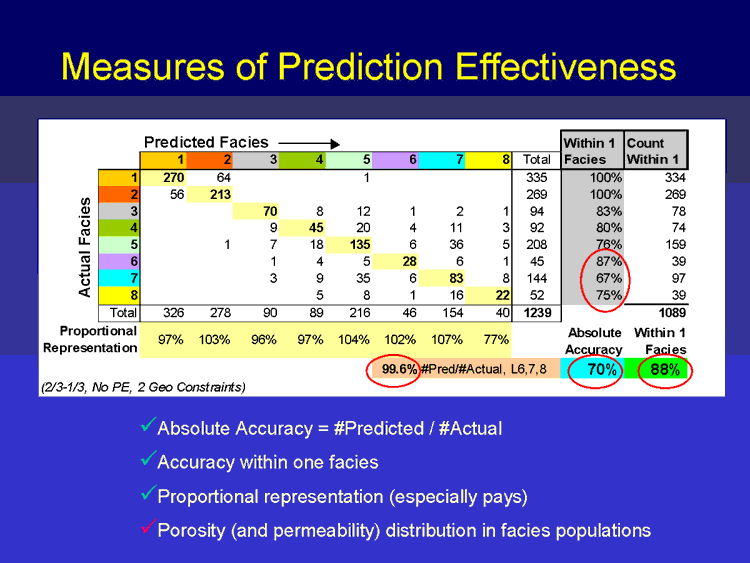 |
|
Kansas Geological Survey Open-file Report 2003-68 |

The effectiveness of lithofacies predictions were tested, measured and judged in many ways in every step of the iterative process. Most often a “jackknife” approach was used where the neural network was trained on a subset (usually two-thirds) of the 3700 half-foot intervals from the eight well training set and predictions were made on the withheld subset (one-third). Measures of accuracy include the following:
- Absolute Accuracy = #Predicted / #Actual
- Accuracy of prediction within one lithofacies of actual
- Proportional representation (particularly pays)
- Porosity (and permeability) distribution in lithofacies populations (discussed in the next slide)
The pivot table shows actual lithofacies compared to predicted lithofacies with the diagonal representing those intervals that were absolutely predicted correctly. For example, 28 of the 45 dolomites were predicted correctly, while five were predicted as wackestones and six were predicted as packestones. Overall, 46 intervals were predicted as dolomites as compared to 45 actual. Accuracy within one lithofacies is important since properties of adjacent lithofacies are similar and the error is reduced. Proportional representation is also important so that the predicted lithofacies populations are similar to the actual.
The three measures, absolute (70%), within one lithofacies (88%) and proportional representation in the pay lithofacies (99.6%) indicate the neural network models are working well.
e-mail : webadmin@kgs.ku.edu
Last updated January 2004
http://www.kgs.ku.edu/PRS/publication/2003/ofr2003-68/slide13.html